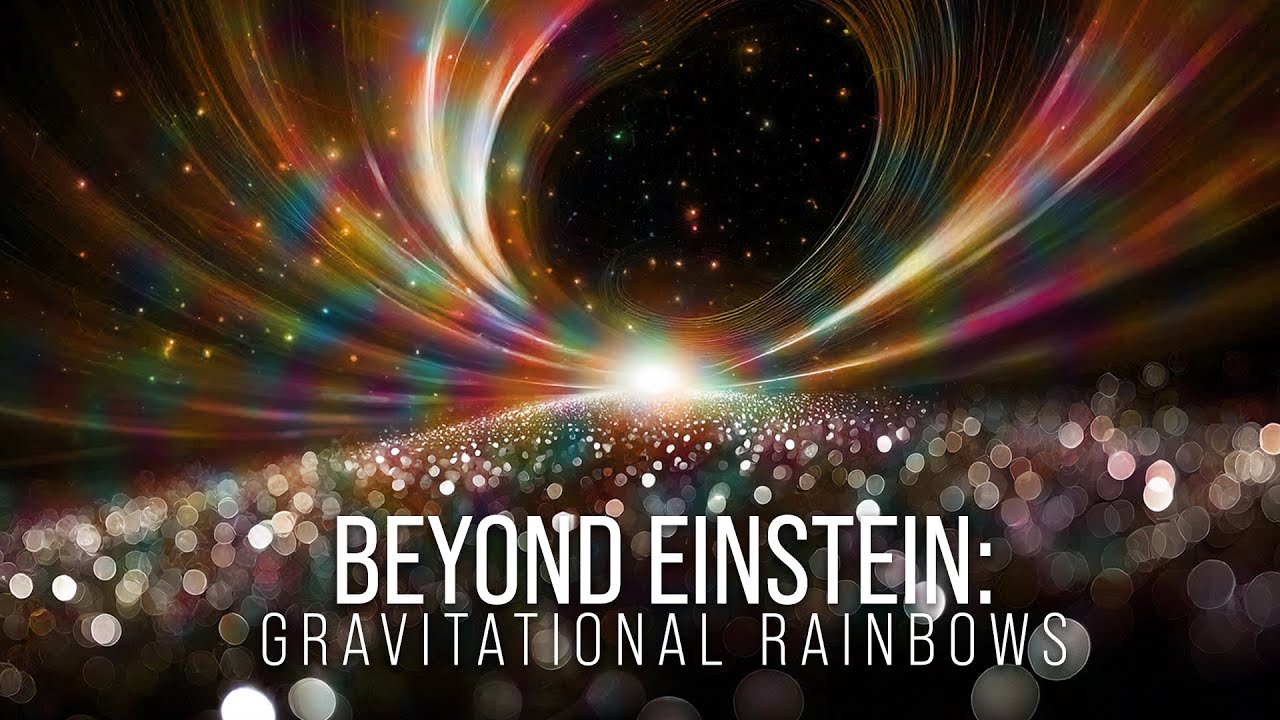Your Daily Equation #26: Einstein's General Theory of Relativity: The Essential Idea
TLDRIn this episode of 'Your Daily Equation,' the host explores Einstein's general theory of relativity, contextualizing it within 20th-century physics. The host explains gravity's evolution from Newton's law to Einstein's realization that gravity is the curvature of spacetime caused by mass and energy. Using accessible analogies like a tornado ride and free-falling painter, the episode simplifies complex concepts, highlighting Einstein's equation that describes the fabric of the universe.
Takeaways
- 📚 The script discusses Einstein's general theory of relativity as a fundamental idea that revolutionized our understanding of the universe.
- 🌌 It organizes 20th-century physics advancements along three axes: speed (special relativity), length (quantum mechanics), and mass (general relativity).
- 🔍 The script contrasts Newton's universal law of gravity with Einstein's theory, highlighting the absence of a time variable in Newton's formula.
- 🚀 Einstein questioned the instantaneous effect of gravity in Newton's law, which implied changes could occur faster than the speed of light.
- 🎯 The script uses the example of 'freefall' to illustrate Einstein's concept that acceleration can mask the sensation of gravity.
- 🌐 Einstein proposed that space and time can warp and curve, influencing the motion of objects, which is central to the general theory of relativity.
- 🌀 The 'tornado ride' analogy is used to explain the connection between circular motion, acceleration, and the perception of a gravitational-like force.
- 🧩 The script describes Einstein's 'happiest thought' experiment involving a falling painter to demonstrate the equivalence of acceleration and gravity.
- 📉 The 'Ehrenfest paradox' is mentioned to show the relationship between circular motion and the necessity of a curved space for consistent measurements.
- 📝 Einstein's final equation of general relativity is presented, with an explanation that it encapsulates the curvature of spacetime and the influence of mass-energy on gravity.
- 🔬 The script promises to delve deeper into the mathematical details of Einstein's theory in subsequent episodes, emphasizing the complexity of understanding spacetime geometry.
Q & A
What is the main topic discussed in this episode of 'Your Daily Equation'?
-The main topic discussed in this episode is Einstein's general theory of relativity, which is a fundamental concept in understanding the physical universe.
How does the presenter organize the major developments in physics that revolutionized our understanding of the universe in the 20th century?
-The presenter organizes these developments along three axes: the speed axis (leading to Einstein's special theory of relativity), the length axis (leading to quantum mechanics), and the mass axis (leading to the general theory of relativity).
What was Isaac Newton's contribution to the understanding of gravity?
-Isaac Newton contributed the universal law of gravity, which mathematically described the force of attraction between two masses and was able to predict the motion of celestial bodies like planets around stars.
What issue did Einstein find with Newton's law of gravity?
-Einstein found an issue with Newton's law of gravity because it implied that changes in the force of gravity could occur instantaneously, faster than the speed of light, which contradicts the principle of relativity.
What is the basic idea behind Einstein's general theory of relativity?
-The basic idea behind Einstein's general theory of relativity is that gravity is not a force transmitted through space, but rather a curvature of spacetime caused by the presence of mass and energy.
What is the 'happiest thought' Einstein had, and how does it relate to gravity?
-Einstein's 'happiest thought' was the realization that during freefall, an observer would not feel their own weight, indicating a deep connection between accelerated motion and the experience of gravity.
What is the 'Ehrenfest paradox' mentioned in the script, and how does it illustrate the connection between acceleration and curvature?
-The 'Ehrenfest paradox' is an example that shows how circular motion, a form of accelerated motion, leads to measurements that do not satisfy the usual rules of flat Euclidean geometry, indicating that the space is curved, thus connecting acceleration with curvature.
How does the tornado ride analogy help in understanding the connection between gravity and curvature?
-The tornado ride analogy helps in understanding that the outward force felt by a person on the ride, due to circular motion, is similar to the gravitational force experienced by objects in a gravitational field, illustrating the connection between gravity and the curvature of spacetime.
What is the final equation of Einstein's general theory of relativity, and what does it represent?
-The final equation of Einstein's general theory of relativity is represented as 'Gμν - (1/2)gμνR = 8πG/c^4 * Tμν'. It represents the relationship between the curvature of spacetime (described by the Ricci tensor and scalar curvature) and the distribution of mass-energy (described by the stress-energy tensor).
Outlines
📚 Introduction to General Relativity
The script begins with the host explaining the setting of the video, noting the change in location due to a messy room. The main topic introduced is Einstein's general theory of relativity, which is contextualized among other major 20th-century scientific advancements. The host outlines three axes—speed, length, and mass—to categorize these advancements. Special relativity is associated with high speeds, quantum mechanics with small lengths, and general relativity with high masses, focusing on gravity. The script then delves into the history of our understanding of gravity, highlighting Isaac Newton's universal law of gravity from the late 1600s.
🌌 Newton's Law of Gravity and Its Limitations
This paragraph discusses Newton's law of gravity, which accurately predicts the motion of celestial bodies but lacks a temporal component. The host uses the example of instantly removing the Sun to illustrate the instantaneous nature of Newton's gravitational force, which Einstein found unsatisfactory, as it implied changes could occur faster than the speed of light. The script also addresses a potential confusion with quantum entanglement, clarifying that while entanglement shows instantaneous correlations, it does not involve the transmission of information. The host then points out that Newton himself was unsure about the mechanism of gravity, which left room for Einstein's further exploration.
🔍 Einstein's Quest for the Mechanism of Gravity
The host explains Einstein's journey to understand the mechanism of gravity, which began around 1907. Einstein aimed to uncover how gravitational influences are transmitted through space, leading to the development of the general theory of relativity by 1915. The basic idea Einstein proposed was that space itself, in the presence of mass, could curve and thus influence the motion of objects. This concept is likened to a rubber sheet or spandex that curves when a heavy object like a bowling ball is placed on it, affecting the trajectory of smaller objects like marbles rolling on the surface.
🌐 The Warping of Space-Time by Mass
The script continues to explore the idea that massive objects like the Sun warp the space-time around them, creating a curved environment that influences the motion of other bodies, such as planets. The host addresses potential confusions about the analogy of using gravity to explain gravity and clarifies that the warping of space by a massive object is not due to an external force but an inherent property of space-time itself. The 3D visualization of this warping is emphasized to convey the full environmental influence of a massive body.
🔗 The Connection Between Acceleration, Gravity, and Curvature
Einstein's realization of the deep connection between accelerated motion, gravity, and the curvature of space-time is discussed. The host describes Einstein's 'happiest thought' experiment involving a painter in freefall, who would not feel their own weight due to the acceleration cancelling out the force of gravity. This concept is demonstrated through an experiment with a water-filled bottle in freefall, showing that the water does not spray out due to the absence of weight during the fall. The host also explains how accelerated motion can mimic the force of gravity, as experienced in an airplane taking off.
🎢 The Ehrenfest Paradox and Circular Motion
The Ehrenfest paradox is introduced to illustrate the relationship between circular motion, acceleration, and curvature. The host explains how circular motion is a form of acceleration that inherently involves curvature. Using the example of a tornado ride at an amusement park, the script describes how measurements of the ride's circumference and radius from the perspective of a person on the ride would differ from those made from a stationary position, indicating that the circle is warped or curved due to the acceleration experienced.
📘 Einstein's Equation of General Relativity
The host presents Einstein's final equation of general relativity, written in November 1915. While the equation itself is complex and involves terms like the Ricci tensor, scalar curvature, and the metric on space-time, the host promises to unpack these mathematical concepts in future episodes. The script emphasizes that the equation encapsulates the idea that gravity is not just a force but a curvature of space-time caused by mass and energy. The dominant influence in this theory is the warping of time rather than space, which affects the motion of objects like the Moon orbiting Earth.
Mindmap
Keywords
💡General Relativity
💡Special Relativity
💡Quantum Mechanics
💡Newton's Law of Gravity
💡Spacetime
💡Curvature
💡Acceleration
💡Ehrenfest Paradox
💡Geodesics
💡Tidal Forces
💡Ricci Tensor
Highlights
Introduction to Einstein's general theory of relativity as a fundamental concept that revolutionized our understanding of the universe.
The presentation of three axes (speed, length, mass) to categorize major 20th-century developments in physics, including special relativity, quantum mechanics, and general relativity.
Isaac Newton
Transcripts
Browse More Related Video

Brian Greene Explains That Whole General Relativity Thing

Beyond Einstein: Gravitational Rainbows

If light has no mass, why is it affected by gravity? General Relativity Theory

Discovery That Changed Physics! Gravity is NOT a Force!

Gravity & Free Fall | Forces & Motion | Physics | FuseSchool

Warped Spacetime, Gravitational Lensing, and Gravitational Waves (Corroborating General Relativity)
5.0 / 5 (0 votes)
Thanks for rating: